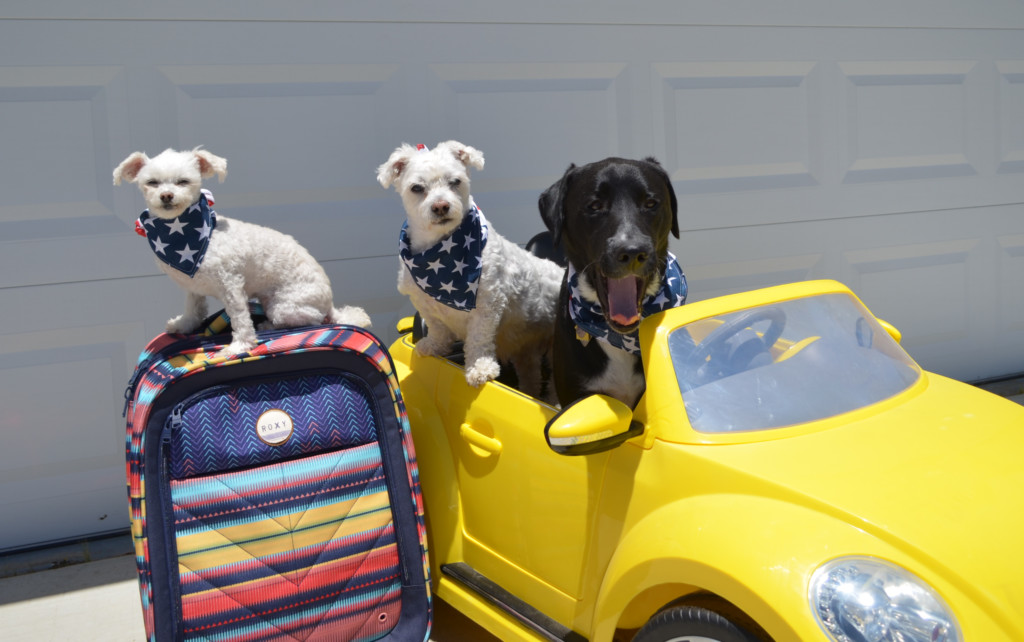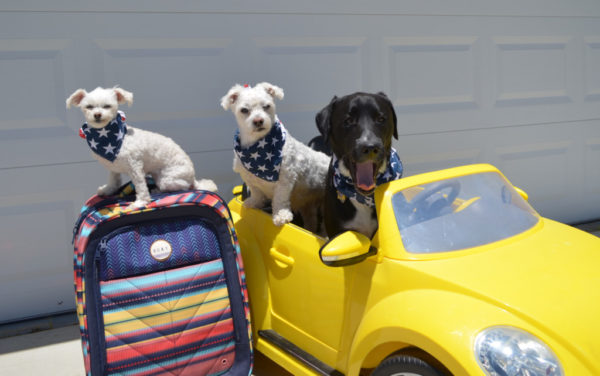
I have been referred to as a “Crazy Dog Lady” no less than a dozen times. There is a significant list of people who have found it necessary to tell me that talking to dogs instead of people is not normal. Whatever.
Dogs are unfailingly thrilled to simply be in the presence of their people. I cannot think of a single human on earth who even likes me 70 percent of the time. In fact, each time I return to edit this post, the percentage dwindles. Dogs do not want to watch Moana 17 times a day. Dogs excitedly eat what they are given, even if it’s “scusting,” and they do not get kicked out of childcare for telling the other children to “kennel up.”
My creatures have seen me through the toughest times in my adult life. They have laid their sympathetic heads in my lap each and every time I’ve been reduced to a crying heap on the floor — more often than not due to the challenging life we live as a military family.
Dogs rock. Cats rock for cat people. Pets rock, except when it’s time to move with them.
Although my ten year plan is to adopt more dogs than my sainted husband can recognize, I am fully aware that I am far from the perfect pet owner. However, I am fortunate enough to have an excellent relationship with our vet, Dr. Julie Deter. Dr. Deter is a Doctor of Veterinary Medicine at the Village Veterinary Clinic on the Central coast of California. She and the folks at Village Vet have worked with the military community at Vandenberg Air Force Base for many years and are well versed in both domestic and international travel with pets.
From the moment the letters PCS are uttered, I inevitably morph into an only slightly less insane version of Gordan Ramsey. Moving sucks, and not just for you. If I have learned anything from my conversations with Dr. Deter, advance preparation is essential for a seamless move with your pets.
Here, find some tips, tricks, and musts for traveling domestically with dogs and cats, so hopefully your next move will be slightly less insane and smelly than it needs to be.
- According to Dr. Deter, pets become extremely stressed throughout the moving process, which may cause them to exhibit behaviors outside of their normal character. It is essential to ensure pets are microchipped and that the contact information on the chip is current. Even if your pet has never bolted, with the onset of movers, open doors and the upheaval of daily life, your pet might run.
- It is possible for normally docile pets who are frightened, disoriented, or stressed to become protective or act aggressively toward the strangers in your home. For this reason, it is extremely important to adequately secure your pet throughout the moving process. This includes in your own home when the movers are present, during potty breaks on the road and at hotels en route to your new station.
- Dr. Deter suggests crate training both dogs and cats in advance of a move. “This gives your pet a safe spot in which he or she is already comfortable. This is beneficial in your own home and when traveling,” she said. Crate training resources can be found at Crate Training 101: The Humane Society of the United States.
- Visit your vet well before your move. Have all of your pet’s records printed to present at your new vet’s office, and put that information in your, “Don’t pack under threat of nuclear meltdown” binder. Your vet can refill meds, update vaccines, and advise you of any potential environmental risks associated with your new station.
- If your pet has exhibited symptoms of travel anxiety or nausea, your vet can prescribe medication, sprays or even collars to alleviate his or her discomfort. Two of my animals LOVE to ride in the car. However, if your pet is anything like My Lilliput, I am sure you have some disgusting, albeit hilarious, stories to tell about going anywhere, anytime. The lives of my entire family have been significantly improved with the introduction of doggy Xanax. Dr. Deter suggests taking your pet for frequent car rides before a long trip as a means of desensitization. Repeated positive association with car rides (not to the vet, groomer, DMV, etc.,) will result in less anxiety surrounding travel. If your pet is not on a medically indicated feeding schedule, skipping the morning meal may also help alleviate motion sickness, according to Dr. Deter. I will be the first one to admit, I have not always followed best practices for riding in cars with pets. Before getting our lab, my two little fluffykins may or may not have ridden in my lap on the regular. This is illegal in numerous states, and for the sake of this article, I have never driven in any of them. I have done my fair share of dumb things while driving, and besides eating Jack In The Box tacos in a Rent the Runway dress on the way to the Air Force Ball, this is probably the most dangerous.
- You can purchase barriers to install in your car to ensure your pet does not wander into the front seat. Harnesses also can be attached to special restraints which clip directly into your car’s seat belt anchor. For cats or extremely anxious dogs, a kennel is the way to go. Dr. Deter suggests making a disposable litter box for cats out of grocery bags to place in the crate for the drive. Roll down the sides of a small paper bag and insert a plastic bag with some litter and place in your cat’s crate. When necessary, toss the plastic bag, and fill it with a new bag and litter. Cool, and not gross!
- When you arrive at a rest stop, hotel, or gas station, secure your pet before you open the car door. As stated previously, stressed pets can act a fool, and you wouldn’t want to be chasing a dog or cat into traffic if he or she bolts.
- Be sure to treat your pets for fleas before staying in any pet friendly hotels, just in case … ew.
- When you arrive at your new home, inspect your property. If it is fenced, ensure there are no areas in which your pet can escape. According to Dr. Deter, a month is usually sufficient time to wait to allow your indoor/outdoor cat to explore on his or her own. This will ensure that he or she won’t get lost and that you will be aware of any potential wildlife hazards which may threaten your cat. Frequently take your dogs on predictable walks, so they have the opportunity to orient themselves to your new environment.
- My last piece of advice stems from my time volunteering at a county animal shelter. Before you do anything else, research the pet policies of your new duty station. All bases, posts, etc., have unique rules regarding pets. The official webpage of the duty station is the best place to start to ensure you have all of the necessary information for a smooth transition. This is especially pertinent if you plan to live in military housing. Your pet may be subject to restrictions he or she had not previously been in at your current station or in off-base housing. A full understanding of the housing regulations before you commit to a contract is essential. You (and I) may not agree with some of the policies, but nevertheless, they will be enforced at some point. I have seen too many pet parents faced with the heartbreaking choice of having a place to live or relinquishing a member of their family. My favorite dog resident at the shelter was the most kind-hearted, squishy-headed guy I have ever met, but his breed was banned from base housing and he sat in the shelter for over two months until he was adopted. Don’t put yourself or your fur-child in this position due to lack of planning.
As I sit writing, listening to my pack snore, I can’t imagine living without them. Good luck, fellow pet parents. See you on the other side.











